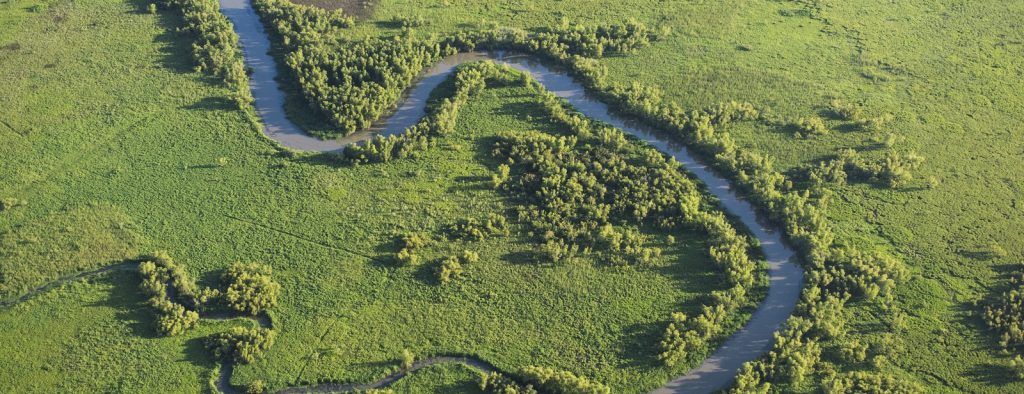Maximizing potential for healthy rivers and low-carbon energy
As the global population climbs toward 9 billion, rivers will experience tremendous pressure. To provide the necessary resources for our growing communities, more river flows will be diverted for agriculture and industry, stored for drinking water and harnessed to meet rising energy demands.
Global forecasts suggest a doubling of renewable energy sources by 2030, and hydropower currently offers nearly twice the generation of all other renewables combined. Hydropower’s contributions will grow as the world commits an estimated nearly US$2 trillion of investment between now and 2040.
Meeting our resource needs while keeping the climate in safe boundaries presents a number of complex challenges and tradeoffs. For instance, completion of hydropower dams currently under construction and those that are planned will affect 300,000 kilometers of rivers globally through fragmentation or changes to river flow patterns. This threatens freshwater fisheries that feed hundreds of millions of people and presents other social and environmental risks.
So, how do we balance our development goals with retaining the values free-flowing rivers provide? And how do we ensure that investments in hydropower are lower risk and realize a broader portfolio of benefits?
It requires reframing the challenge between development and rivers as one of system design–meaning, we must consider a comprehensive management system that balances the needs of energy and industry with what river basins need to remain healthy and thriving. A new report, The Power of Rivers: A Business Case, published by The Nature Conservancy, in partnership with McGill University, the University of Manchester and PSR, brings decision makers a first-of-its-kind global analysis to help yield better economic, social and environmental outcomes in hydropower planning and management. This is the foundation of a system-scale approach we call Hydropower by Design.
The business case builds from the 2015 Power of Rivers report and draws from the Conservancy’s 65-year history of providing evidence-based, bottom-line oriented solutions to balancing conservation and development needs. Key findings suggest that the potential global economic benefits of widespread adoption of a system scale approach to hydropower planning and management are significant: even a 5 percent improvement in other water-management resources in hydropower-influenced basins would produce up to US$38 billion per year in additional benefits, a sum comparable to average annual investment in hydropower.
Another financial value for investors lies in improved risk management. Hydropower by Design can guide site selection toward a portfolio of projects with a lower percentage of significant delays and cost overruns due to environmental and social risks.
System scale thinking: essential to increasing investment benefits, minimizing risk
Across renewable energy sources, it’s critical that we consider early planning and holistic approaches to avoid or mitigate impacts to our productive lands and waters. While site-level mitigation of hydropower impacts can help, a number of issues cannot be addressed effectively at the scale of single dam. System-wide processes and tools are needed to identify development and management options that are both strategic and low impact, as well as financially competitive.
Countries facing urgent demands to increase electricity generation are understandably hesitant to embark on a strategic planning process if they believe it will delay delivery of projects that can meet rising demand. By drawing from integrated water-management, energy and financial models, Hydropower by Design (HbD) can deliver useful insights about development and management options for governments, investors and developers in a relatively short period of time. And the potential to capture economic values beyond energy generation is substantial.
In a set of nine case study basins, HbD approaches increased the level of other values—including water supply, flood-risk management and habitat for migratory fish—by 5 percent to more than 100 percent, compared to business-as-usual approaches. This occurred generally with no or limited reduction in energy generation—in some cases, there was a considerable increase in generation.
The powerful insights that an HbD approach can provide in the short-term, can deliver long-term, positive outcomes capable of maintaining connectivity on hundreds of thousands of river kilometers while realizing a broad range of other financial and economic benefits.
To learn more, and explore a series of quantitative case studies through download of the business case report, visit www.nature.org/powerofrivers.
Header photo: © Michael Yamashita


